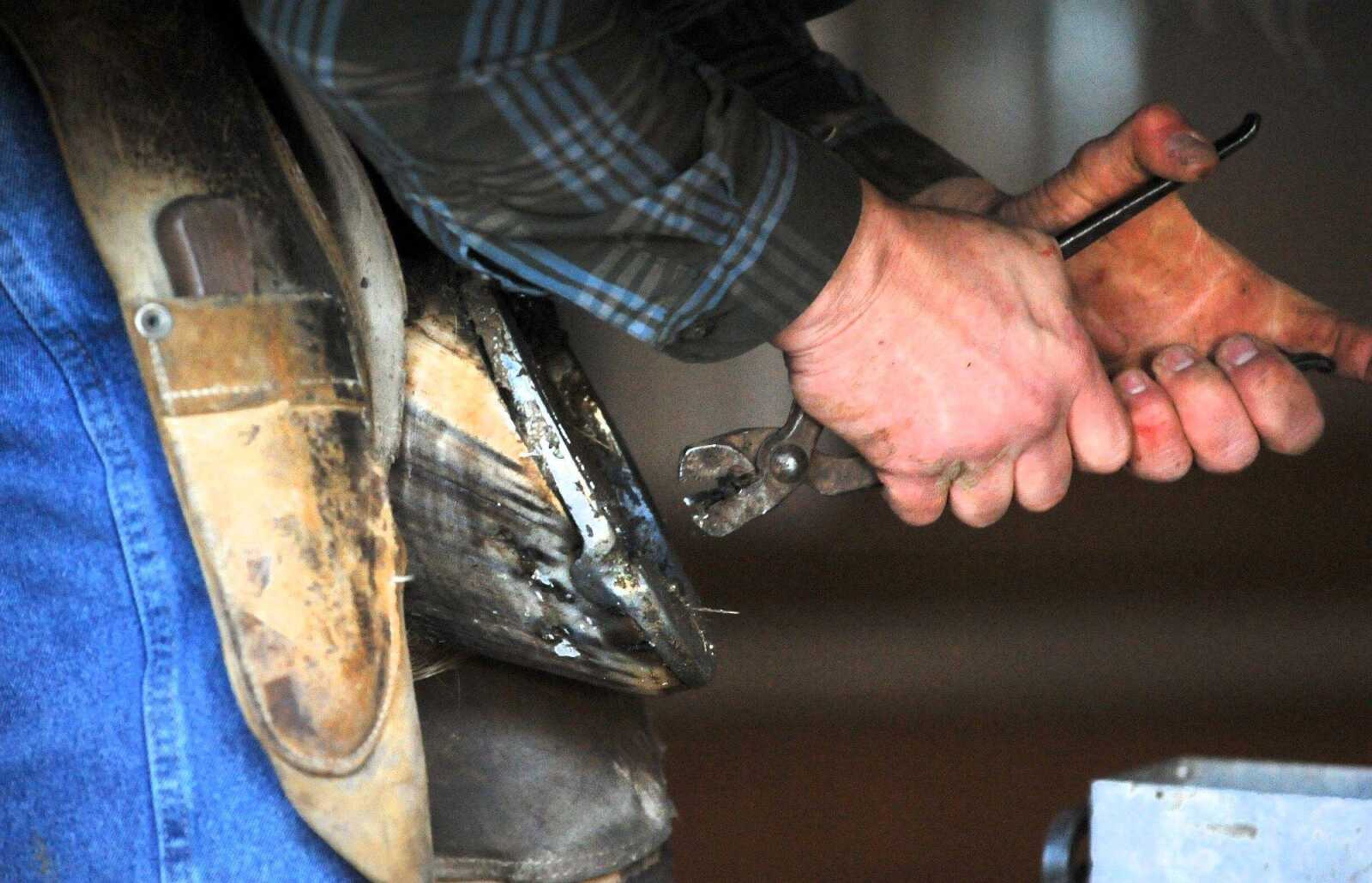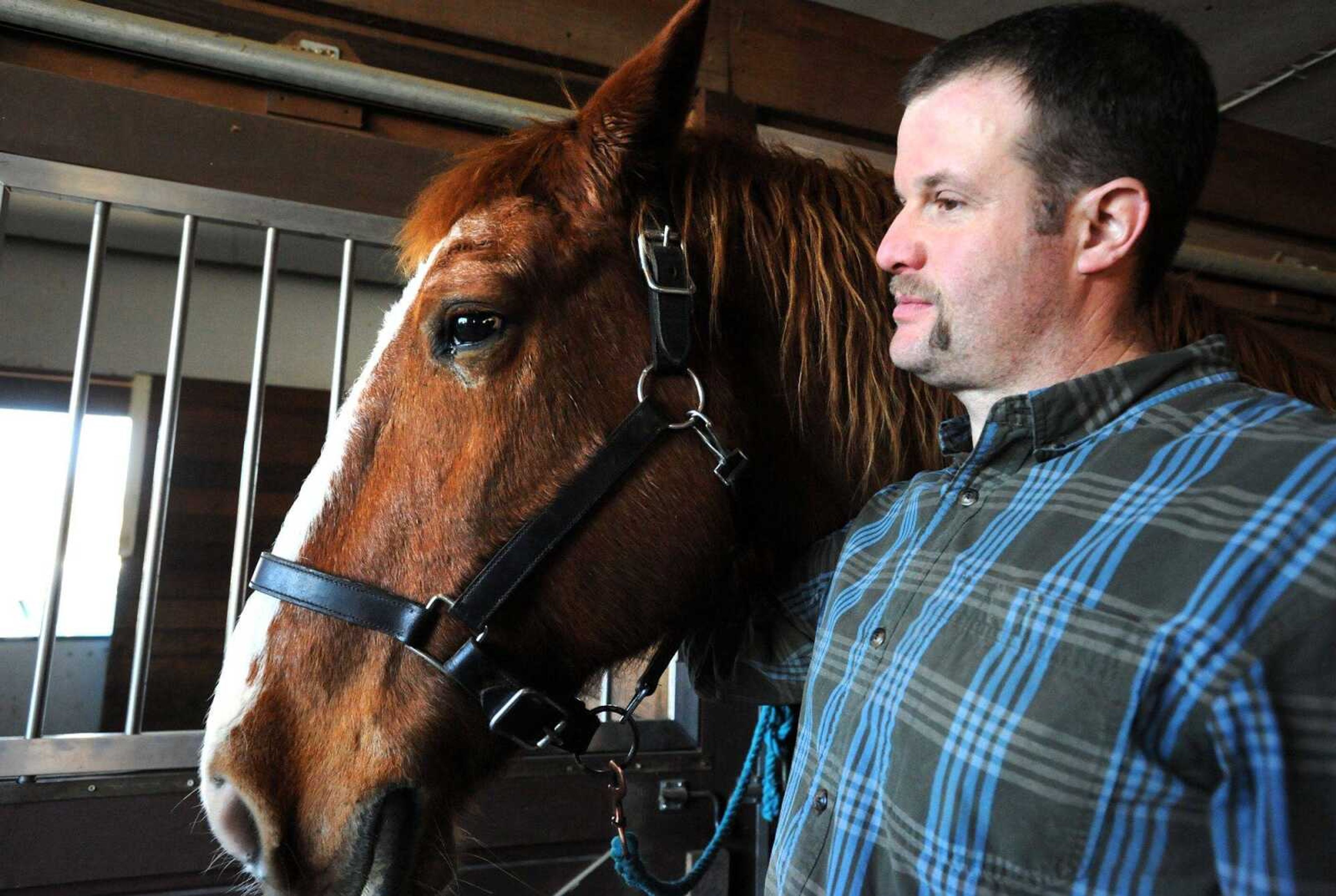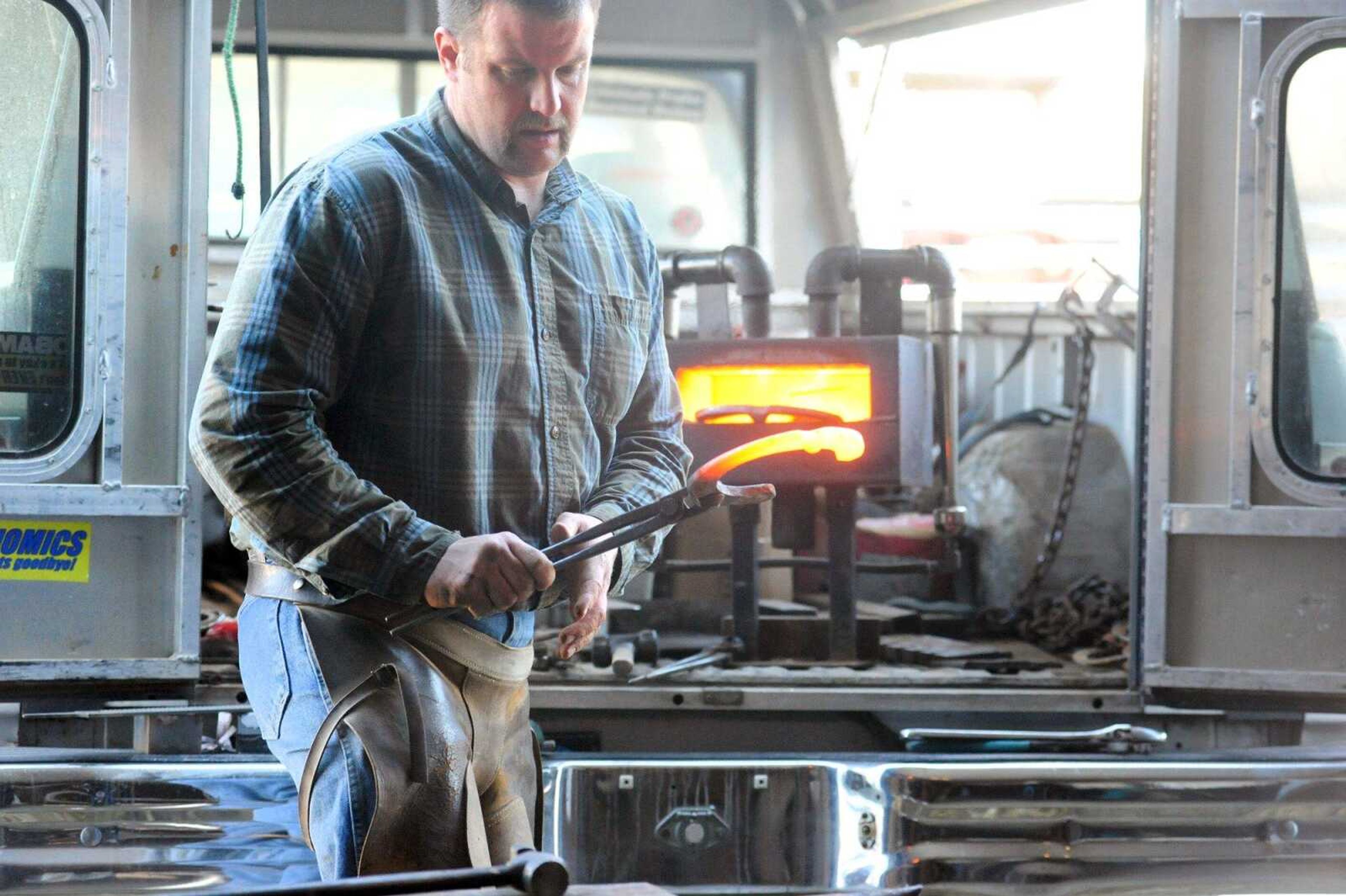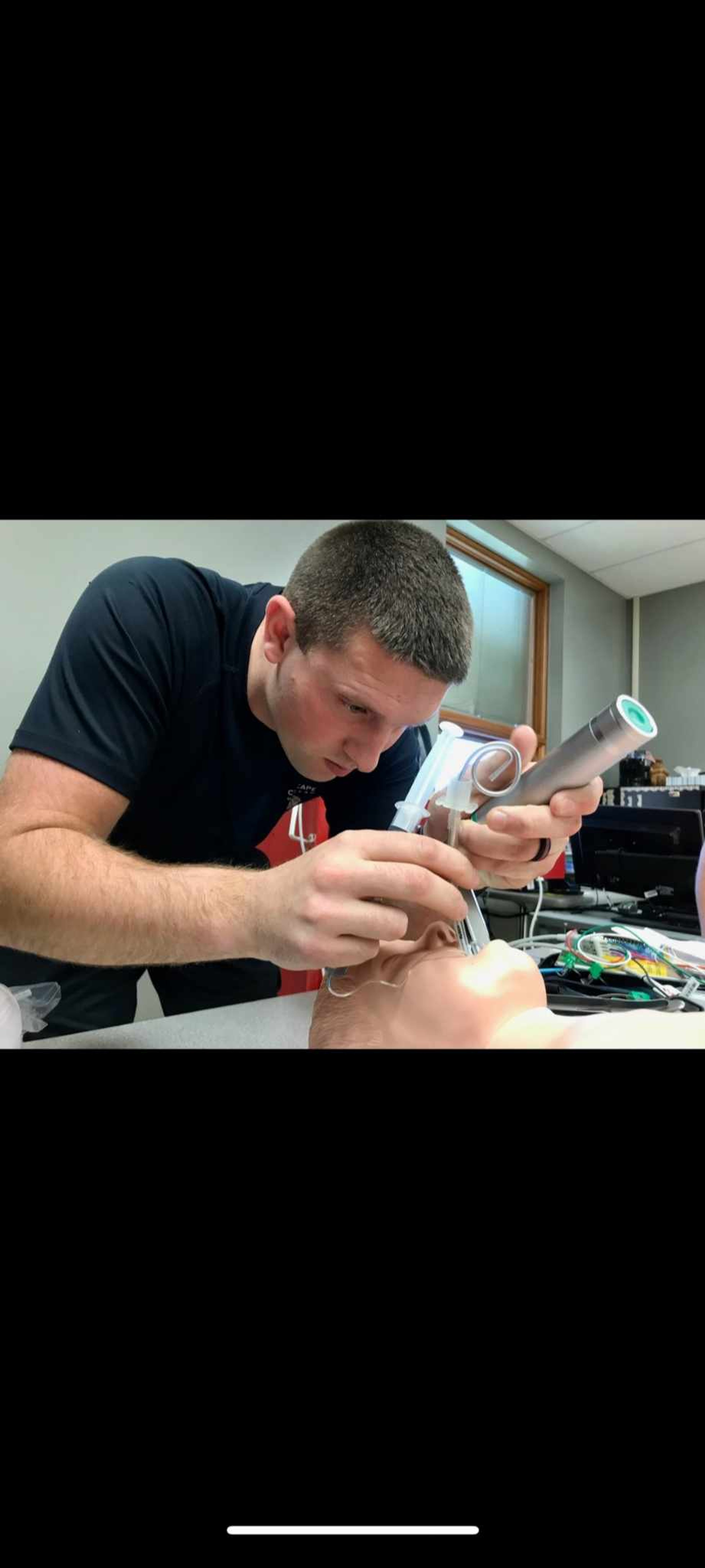Have anvil, will travel
Daniel Puckett is a guy who shoes horses. But spend a little time with him, and you'll understand that the abilities he brings to the stable are as much art as they are science. Puckett has a working knowledge of equine anatomy. He knows the biomechanics of the animal's gait. He is a specialist in equine hoof care -- trimming a hoof and balancing a foot...
Daniel Puckett is a guy who shoes horses. But spend a little time with him, and you'll understand that the abilities he brings to the stable are as much art as they are science.
Puckett has a working knowledge of equine anatomy. He knows the biomechanics of the animal's gait. He is a specialist in equine hoof care -- trimming a hoof and balancing a foot.
And he knows how to work an anvil, taking 18 inches of white-hot steel and fashioning it into a custom shoe. And he's a bit of a horse whisperer -- convincing a 1,000-pound animal that what he's doing isn't going to hurt and is actually going to be good for it.
Puckett lives in Perryville with his wife, Christina, a real estate agent, their 2-year-old son, Wesley, and a 16-year-old grade gelding named Boomer. Puckett is a 2009 graduate of the Kentucky Horseshoeing School's 24-week farrier training -- farrier is the term for a specialist in equine foot care -- and certified by the American Farrier's Association, Puckett says the vocation comes to him quite naturally.
"I had shoed my own horse a time or two, under the supervision of a farrier at the time. I enjoy working with my hands, and I enjoy working with horses, so being a farrier is a good way to put the two together," Puckett explained. "I was raised by a single mother, and we had horses as far back as I can remember. We used the horses for working the cattle. I've been around horses my entire life."

"It originally was a hair-brained idea. I was in college, studying animal science -- pre-vet -- at Mizzou. I had to quit because of financial reasons; I would have had to live on Raman noodles and bologna all the time," Puckett said. "I did some research, and I liked the appeal of having my own business and setting my own hours. Ten years later, I went to the Kentucky school."
Now, Puckett travels with his 100-pound anvil and propane-fueled forge in the back of his truck, taking care of horses from Ste. Genevieve to Poplar Bluff, and into the Missouri Bootheel and Southern Illinois. He says he's one of eight or so farriers in the area, and, he says, he's the "only one doing it full time and as in-depth."
"People hear about me at the vet's office, the feed store, from other horse-owners. Word travels fast in the horse industry. It's a small community," Puckett said.
His clientele ranges from performance horses, such as barrel racers, to family pets.
"It's a 50-50 balance. Around here we have backyard horses that are ridden three times a year by the grandkids, trail horses, performance horses and gaited horses like Missouri fox trotters, Tennessee walking horses and Rocky Mountain horses, which are getting pretty popular," Puckett said.

"There's always the decision to shoe or not to shoe, to have the horse shod or barefoot," Puckett said, adding, some owners leave the decision up to him, depending on the horse's activity and the wear on the foot.
"Barrel racers, jumpers, rodeo horses and horses on the race track need more traction than their bare feet can provide -- really for any athletic endeavor," Puckett said.
"There are therapeutic reasons to shoe, to get a horse back to being sound. A horse may step on something or step in a hole and strain a ligament or something like that," Puckett said, and that may require a special shoe that another farrier would have to order. Puckett, however, would himself forge it -- a bar shoe.
"A bar shoe will stabilize the hoof capsule; it's similar to putting a brace on your wrist or ankle. It takes the pressure off one part of the hoof or leg," Puckett said.
Puckett's job includes pulling the anvil from his truck three or four times a day, setting up in barn or stable, and getting to work. The forge heats to 2,400 degrees, and "will turn steel bright white-yellow," Puckett said.
A frequent challenge, Puckett explained, is gaining the trust of the horse.
"A Belgian [draft horse] weighs 1,800 pounds, and her foot can weigh 100 pounds, and she may lean on me a bit," the 6-1, 240-pound Puckett said. "I have to convince them, 'I'm not going to hurt you by picking up your foot.' They have a strong fight-or-flight instinct, and a foot in the air puts them in jeopardy. Horses may have been abused in the past by a previous shoer. Horses remember that stuff, so, to me, there is an element of danger. Part of my job is to convince them that the guy who shows up with the truck is their friend."
Puckett looks back with pride and forward with ambition.
"I feel I've accomplished quite a bit, and I'm happy to be doing the horse-shoeing thing full time. For a while, I drove a truck full time in the evening and did the shoeing during the day. God blessed me with incredible talent, and I want to make it to the horse-shoeing hall of fame," Puckett said.
"I like working with my hands and there's a lot of that in it. You've got anatomical structures, distortions from the so-called 'ideal.' You've got to be a bit artistic to get to what 'ideal' is. There's a lot of science behind it; it's half science and half art."
Connect with the Southeast Missourian Newsroom:
For corrections to this story or other insights for the editor, click here. To submit a letter to the editor, click here. To learn about the Southeast Missourian’s AI Policy, click here.










